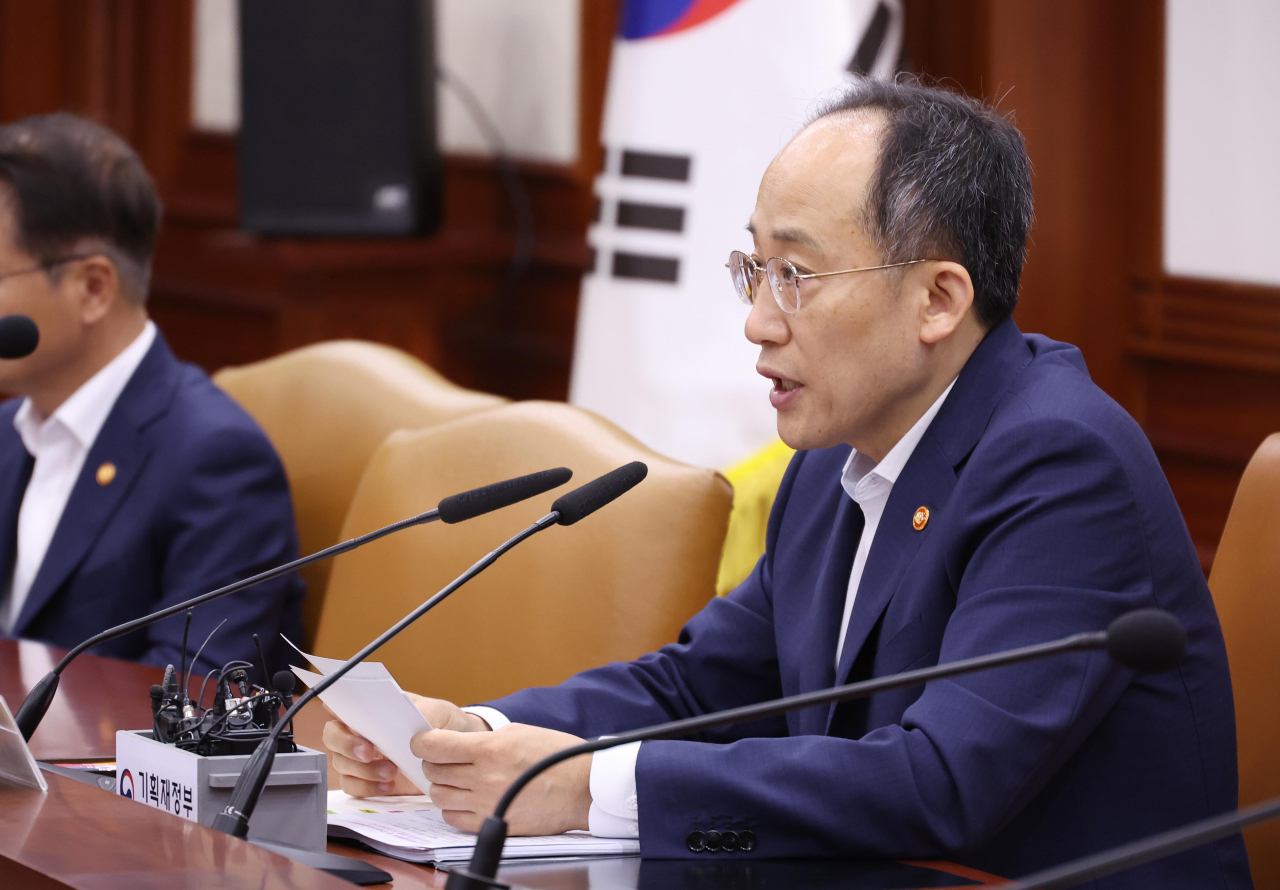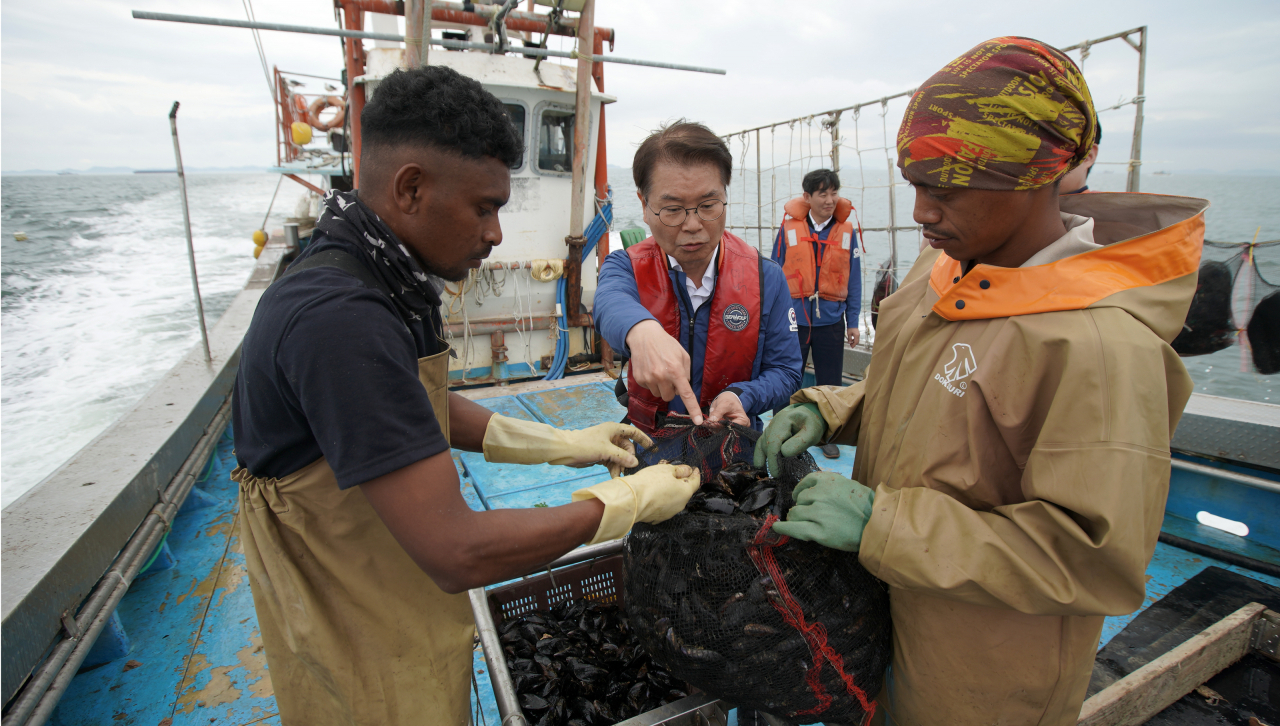 |
Finance Minister Choo Kyung-ho speaks at a meeting held at the governmental complex in Gwanghwamun, central Seoul, Wednesday. (Yonhap) |
The Korean government plans to ease the visa quota for foreign workers to resolve growing labor shortage issues.
“We will resolve the imbalance in the labor market by improving the working environment and using foreign human resources,” Finance Minister Choo Kyung-ho said at a meeting Wednesday.
Choo said the government will lift the quota for the E-7-4 visa for skilled workers from 5,000 to 35,000 within the year and ease the standard on minimum annual income, which currently stands at 26 million won ($20,150).
The government will further work to increase the quota on the E-9 visa for nonprofessional workers, which was raised from 69,000 in 2022 to 110,000 in 2023, while allowing the visa holders to work in a wider array of industries, which is currently limited to the manufacturing, construction, fishing and agriculture industries. The government is likely to expand the pool to restaurant and accommodation businesses.
Choo’s announcement came along with a report on the labor market by Statistics Korea that showed Korea’s employment rate stood at 63.5 percent in June, the highest since related data began being compiled in 1982. The country's jobless rate stood at 2.7 percent last month.
 |
Labor Minister Lee Jung-sik (middle) inspects a business in Ansan, Gyeonggi Province which hires foreign workers who are E-9 visa holders, Tuesday. (Ministry of Employment and Labor) |
Though the country’s labor market has been strong recently, the government sees that there is an imbalance in the job market, as some employers are continuing to have a hard time finding employees.
According to the Labor Ministry, there were 214,000 job openings as of May. The ministry defines job openings as empty posts able to start work in less than a month.
“The number of those employed has been going up with increased face-to-face service employment and more women and seniors participating in economic activity,” Choo said.
“However, there is an imbalance in the labor market depending on the type of businesses as some are having trouble finding employees.”
To fill in the labor gap, the government plans to strengthen the support for industries having difficulties with workforce shortage, including the shipping, construction, fishing and resource recirculation industries.
The measures include improving work conditions for the shipping industry, ensuring outstanding crew do not leave for jobs overseas.
For the construction industry, the government will come up with standards on the installation of convenience facilities for workers, such as lounges for resting and dressing rooms.
This is the second round of measures for worker shortages released by the government. The first round of measures was released in March, focusing particularly on manufacturing and welfare industries.
“We will expand support for small and medium-sized enterprises with high occupancy of parental leave, and work to match jobs with people in cooperation with local governments,” Choo said.
Meanwhile, the government said it will launch a new fund to revive the regional economy. The funds, raised by both the state and private sector, will allow regions to take out financing loans to work on new projects to encourage the local economy. The government plans to have the funded projects go into action by the first quarter of 2024.
"The government has been having discussions with (regional) governments and private finance experts for months. We expect diverse, big scale projects can be led through the fund, such as convergence clusters and integrated resorts for tourism," Choo said.







![[Weekender] Korea's traditional sauce culture gains global recognition](http://res.heraldm.com/phpwas/restmb_idxmake.php?idx=644&simg=/content/image/2024/11/21/20241121050153_0.jpg)